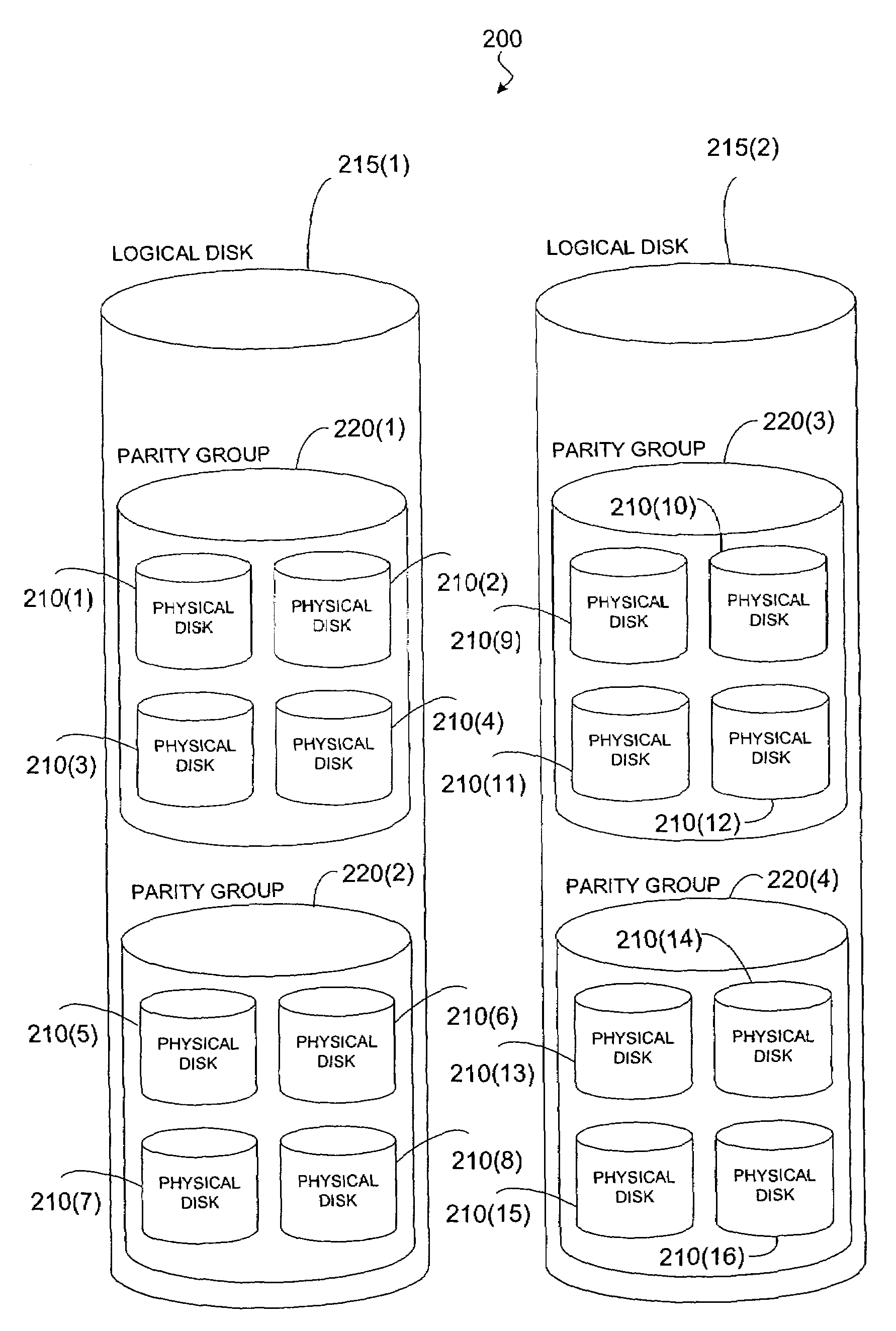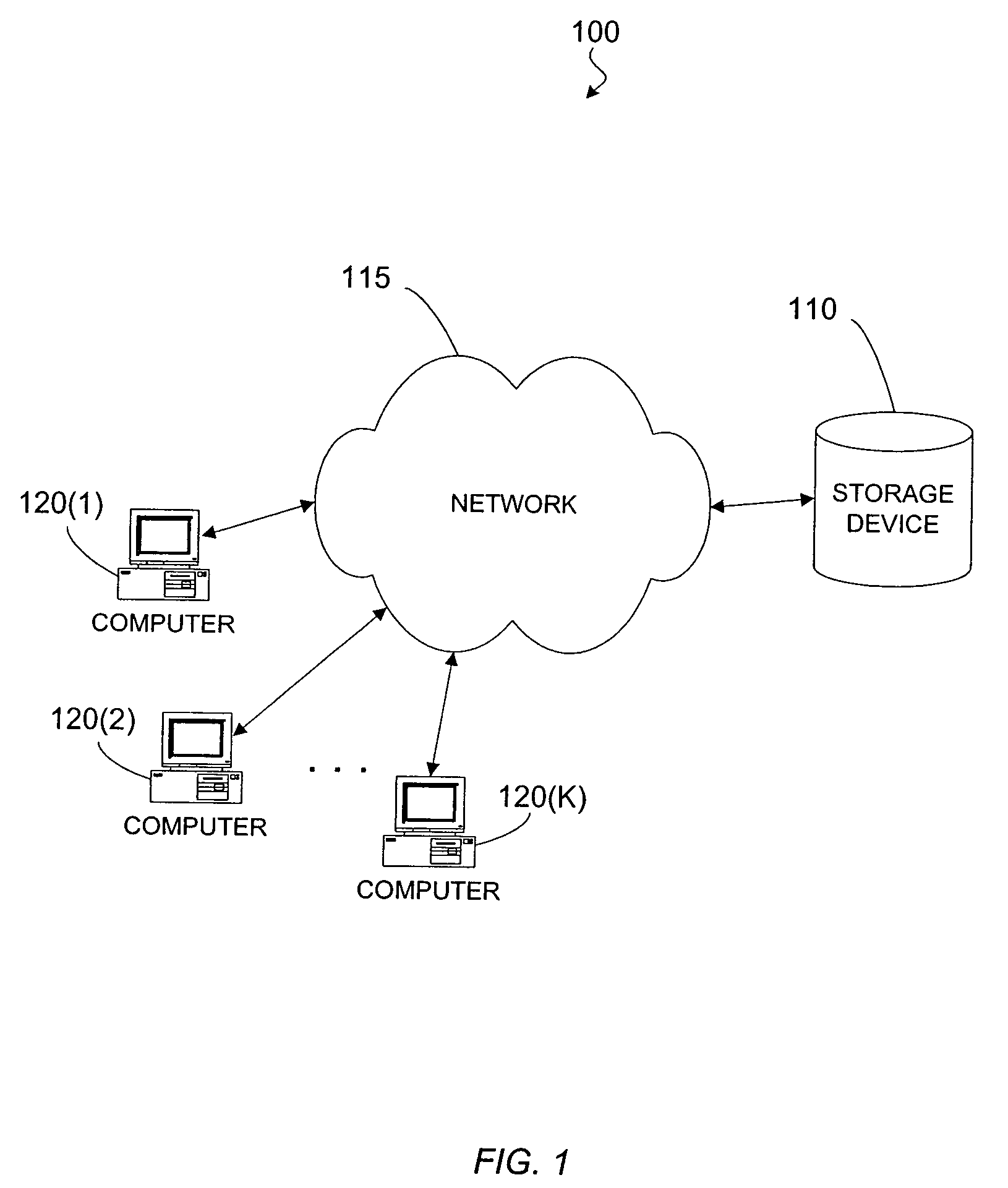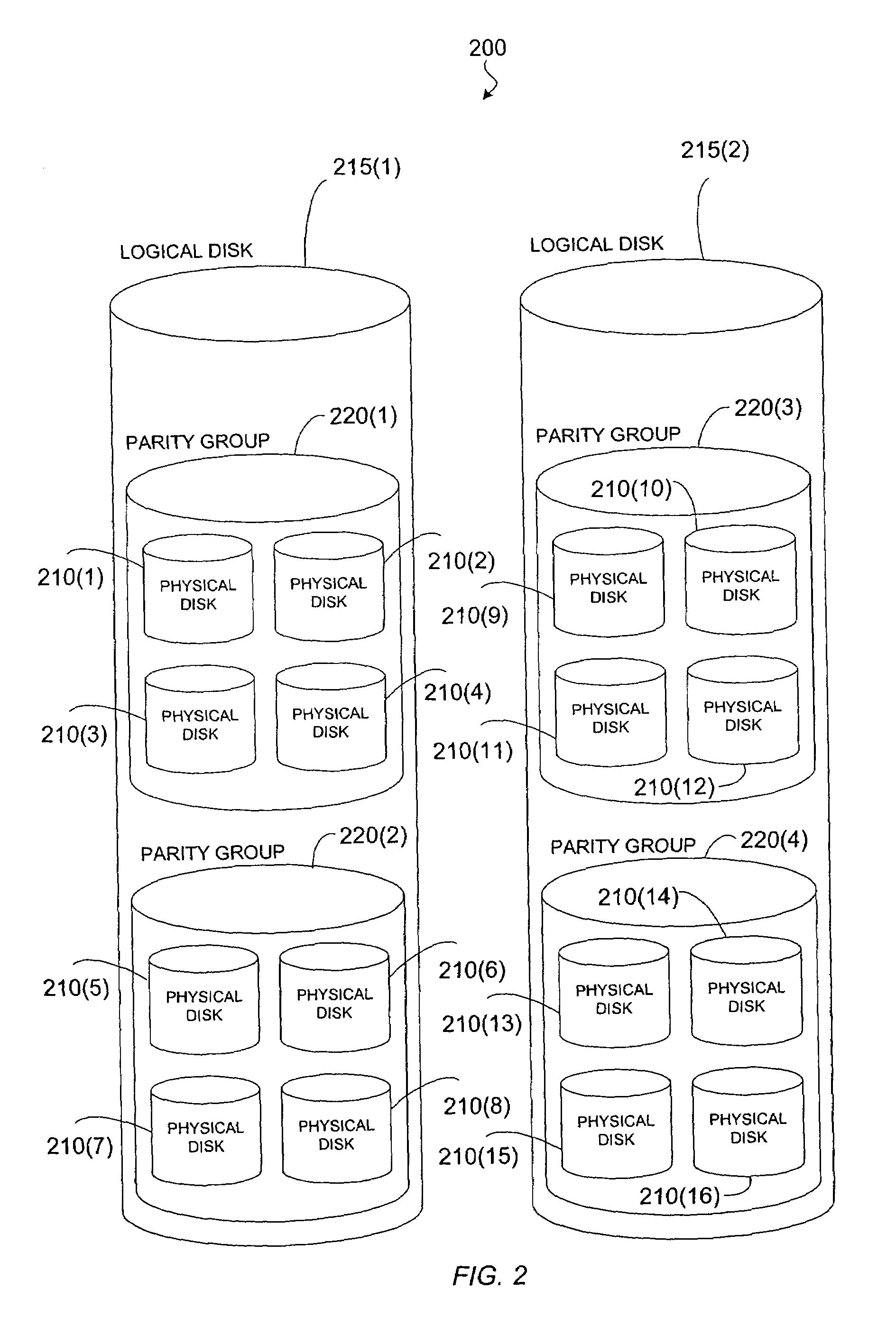Method for partial data reallocation in a storage system
a storage system and partial data technology, applied in the field of storage systems, can solve the problems of increasing storage capacity, difficult to increase the number of physical disk drives, and large amounts of data must be moved among the physical disk drives, so as to achieve the effect of reducing i/o performance, sacrificing disk capacity, and improving i/o efficiency
- Summary
- Abstract
- Description
- Claims
- Application Information
AI Technical Summary
Benefits of technology
Problems solved by technology
Method used
Image
Examples
Embodiment Construction
Overview
[0034]FIG. 1 is a simplified block diagram illustrating an example of a system in which the present invention may be embodied. The system 100 includes a storage device 110, coupled with a network 115. Additionally, one or more computers 120 are also coupled with the network 110. Computers 120 can access data stored on the storage system 110 via the network 115. In another embodiment, one or more computers 120 may be coupled with the storage device 110 directly instead of via a network.
[0035]FIG. 2 is a simplified block diagram illustrating one embodiment of a storage system 200 according to the present invention. Particularly, FIG. 2 is a logical representation of a storage system 200 comprising a plurality of physical disk drives 210. The plurality of physical disks 210 are configured as one or more logical disks 215, and each logical disk 215 may comprise storage segments on one or more of the physical disks 210. But, as is well known to those skilled in the art, computers...
PUM
 Login to View More
Login to View More Abstract
Description
Claims
Application Information
 Login to View More
Login to View More - R&D
- Intellectual Property
- Life Sciences
- Materials
- Tech Scout
- Unparalleled Data Quality
- Higher Quality Content
- 60% Fewer Hallucinations
Browse by: Latest US Patents, China's latest patents, Technical Efficacy Thesaurus, Application Domain, Technology Topic, Popular Technical Reports.
© 2025 PatSnap. All rights reserved.Legal|Privacy policy|Modern Slavery Act Transparency Statement|Sitemap|About US| Contact US: help@patsnap.com



